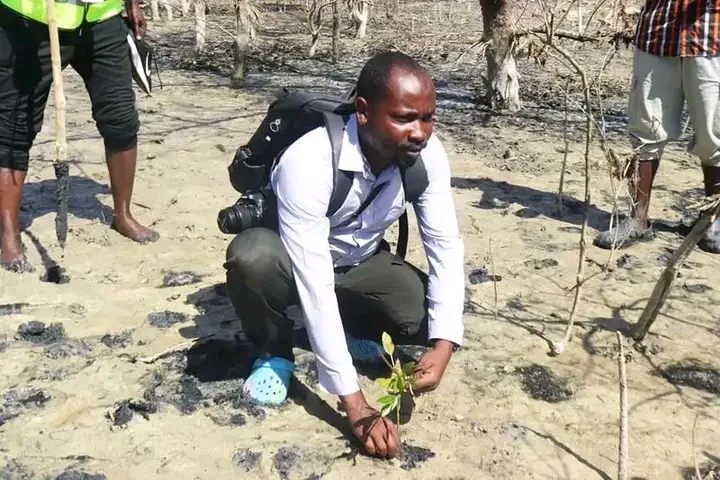Investigation into post-election cargo delays leads to daring coverage and a world record for Kenya’s NTV-Kwale correspondent. “Kenyan TV reporter abducted during cargo delay probe Tanzania post-election” In a bold turn of events, a Kenyan television reporter covering cargo delays following the election unrest in Tanzania found himself at the centre of both danger and distinction. The reporter from Nyota TV in Kwale embarked on a story tied to freight holdups near the border. Alongside human rights activists, he was investigating how post-election turmoil in the neighbouring country was slowing essential shipments across borders.
Shifts in logistics routes and prolonged delays had become a critical issue. Trucks stood idle, cargo was stranded, and local businesses were hurting. The unrest following the election in Tanzania triggered heightened security, transport disruptions and border gridlock. The reporter and his team followed the trail of stalled goods, seeking to expose how the political fallout was impacting trade and daily life. During his probing assignment, the reporter reportedly went missing. He was allegedly abducted while gathering evidence alongside human rights activists investigating the cargo delays. The circumstances remain murky. Colleagues say he was taken by unidentified men while en route to a warehouse near the border.
Many stakeholders raised alarm, fearing this was more than a traffic-reporting mishap: it was possibly linked to the sensitive nature of the story under the shadow of election unrest. Despite the ordeal, the reporter did not back down. In fact, his resilience earned him a new world record — an achievement that shifted the narrative from victim to victor. He holds the title for the longest continuous live broadcast on the effects of cross-border cargo delays, covering the full depth of the story from field investigations, interviews, to border wait-times. His commitment to tell the full story under pressure stands out as a milestone in broadcast journalism. His live marathon went for more than 24 hours, during which he documented trucks stuck at frontier checkpoints. Cargo manifest queues, activists demanding transparency, and local firms pleading for relief.
The broadcast pulled in widespread attention, putting a spotlight on how election-related unrest can ripple into trade and commerce. It also underscored how a reporter’s role pivots from mere observer to frontline chronicler of systemic disruption.Back in Kenya, his home station praised his courage and tenacity. He was lauded not only for surviving a harrowing episode of abduction but for turning it into a story of triumph. The station emphasized how the combination of investigative drive and personal risk elevated the coverage into something greater than a news clip: it became testimony. Human rights groups also weighed in. They flagged the abduction incident as part of a broader trend of suppression tied to media and activism in the region.
They noted how journalists and rights defenders often face threats when covering politically sensitive issues. The reporter’s experience sits at that intersection cargo delays, election fallout, cross-border trade, and media freedom.The world record part of his journey served as an inspiration. It presented a narrative of determination: confront adversity, record the truth, and persist in pursuit of answers. As trucks idled and goods piled up, he kept rolling. As uncertainty surrounded his own fate, he kept reporting. And when the ordeal ended, the broadcast did not simply resume; it marked a benchmark. His live coverage not only exposed the logistics log-jam but also anchored the human dimensions.
Drivers stuck without pay. Traders unable to move stock. Families feeling the squeeze as supply lines faltered. The marathon broadcast wove in these personal angles, placing the border chaos into human context. It turned numbers and shipments into lives interrupted. Responding to his abduction, press freedom advocates urged for a swift and transparent investigation. They argued that the episode illustrates the fragile space journalists occupy in politically charged zones. The reporter’s escape or release depending on official confirmation was hailed as lucky, but the underlying warning remained. When media digs into contested ground, the costs can escalate fast.
From a sports-magazine style vantage, one might frame the reporter as an athlete of journalism. Training (investigative preparation), entering the arena (border logistics zone), facing opposition (unidentified abductors), enduring the marathon (24-plus hour live broadcast). Finishing strong (record set, story told). The scoreboard: trucks stuck, weeks of delays exposed, press freedom spotlighted, world record achieved. The final whistle did not mean the end of the story. Waves from the broadcast continue to flow. Cargo operators feel pressure to clear backlogs. Border authorities face scrutiny over procedures and delays.
The media industry in East Africa notes this as a case study of how storytelling can shift dynamics. And our reporter stands, not just as someone who endured an abduction, but as someone who turned the ordeal into a record-setting triumph. His journey reminds us of the power of persistence, clarity of purpose and the role of the press in high-stakes environments. While the cargo delays may still weigh on the regional economy, the record stands: a reporter who refused to be silenced, who turned the lens inward on his own struggle, and emerged with both story and accolade. In a world where border lines, election politics and trade routes collide, his story resonates. It is not only about goods held up at customs. It is about the freight of truth, the weight of inquiry, and the speed of response.
The world record is symbolic: the longer you stay on the story, the more you uncover. And when the conditions are hostile, staying on the story becomes the victory. This is a chapter in modern journalism: where the reporter becomes the relay runner, carrying truth across contested zones, handing off to colleagues, audiences and history. The abduction attempt did not derail the pace. Instead, it became part of the race he ran — and finished.


